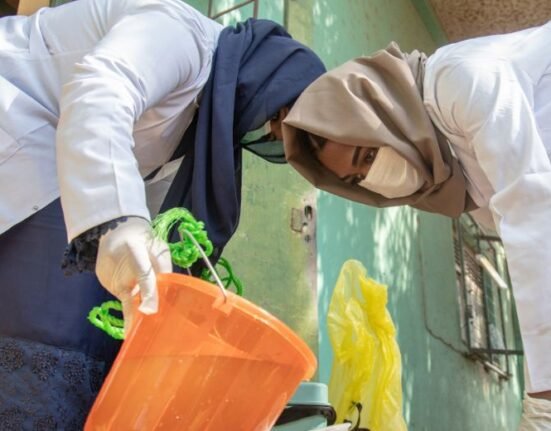HQ Team
July 26, 2023: Better access to testing and diagnostic services is required to prevent sexually transmitted infections (STI) being acquired by more than one million people every day, the WHO stated.
During the COVID-19 pandemic, many countries have reported low coverage for prevention, testing, and treatment services, which has led to a resurgence of such infections globally, according to the WHO.
Countries with good STI surveillance, such as the US and the UK, are reporting increasing STIs.
“Emerging outbreaks of new infections, such as mpox, and the re-emergence of neglected STIs pose challenges for prevention and control efforts.”
The WHO guidance comes as the STI & HIV 2023 World Congress in Chicago, US, concludes on July 27, 2023. At the congress, WHO will also discuss its latest STI research agenda and antimicrobial resistance in gonorrhoea.
Eight pathogens
More than 30 different bacteria, viruses, and parasites are known to be transmitted through sexual contact, including vaginal, anal, and oral sex.
Some STIs can also be transmitted from mother to child during pregnancy, childbirth, and breastfeeding. Eight pathogens are linked to the greatest incidence of STIs.
Of these, four are currently curable — syphilis, gonorrhoea, chlamydia and trichomoniasis.
The other four are incurable viral infections — hepatitis B, herpes simplex virus (HSV), HIV and human papillomavirus (HPV).
Emerging outbreaks of new infections that can be acquired by sexual contact include monkeypox, Shigella sonnei, Neisseria meningitides, Ebola and Zika, as well as re-emergence of neglected STIs such as lymphogranuloma venereum.
These herald increasing challenges in the provision of adequate services for STIs prevention and control.
Failure on gonorrhoea
Several countries are increasingly reporting failures of current treatment recommendations for gonorrhoea.
According to the WHO, the spread of a Neisseria gonorrhoea clone that is highly resistant to ceftriaxone, is of concern and is increasingly being reported in many nations.
These countries include China, Japan, Singapore, and Vietnam as well as Australia, Austria, Canada, Denmark, France, Ireland, and the UK.
The enhanced gonorrhoea surveillance suggested high rates of resistance in gonorrhoeae to current treatment options such as ceftriaxone, cefixime, and azithromycin in Cambodia.
Syphilis, as well as congenital syphilis, are on the rise, and the lack of benzathine penicillin poses a considerable challenge to effectively treat them.
Drug resistance is a major threat to reducing the burden of STIs worldwide.
Limited access
Monitoring and understanding the trends of new STIs in low and middle-income countries are hindered by limited access to diagnostic tests.
“Early testing and diagnosis are key in stopping the spread of STIs. When left untreated, certain STIs can lead to long-term irreversible outcomes and some can be potentially fatal, “said Dr Teodora Wi, Lead for Sexually transmitted infections of the WHO Global HIV, Hepatitis and STIs Programmes.
“Our new guidance can help make low-cost point of care tests for STIs more accessible, enabling improved data collection and quality delivery of STI services for people in need.”
WHO’s new guidance includes target product profiles (TPPs) for point-of-care diagnostic technologies for diagnosing syphilis (treponema pallidum), Chlamydia trachomatis, Neisseria gonorrhoeae and Trichomonas vaginalis, which aim to facilitate the development of quality STI diagnostics.
A new fourth edition of the Laboratory and point-of-care diagnostic testing for STIs including HIV provides up-to-date information on how to isolate, detect, and diagnose STIs, including HIV.
Scale up screening
A new WHO product on the Diagnostics Landscape for Sexually Transmitted Infections (STIs) highlights diagnostics available to support scale-up of screening for STIs.
“Recent scientific advances in STIs treatment and technologies, and innovative service delivery methods, provide an important opportunity to end STIs as a public health concern by 2030,” said Dr Meg Doherty, Director of WHO’s Global HIV, Hepatitis and Sexually Transmitted Infections Programmes.
“However, large variations in investment, maturity, and performance of STI surveillance systems between countries continue to be a challenge.”
The 75th World Health Assembly (in May 2022) approved the implementation of the new Global Health Sector Strategies on, respectively, HIV, viral hepatitis and sexually transmitted infections for the period 2022-2030 (GHSS), which provides strategic directions to address current challenges in STI control.








